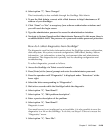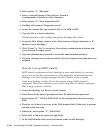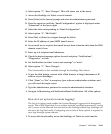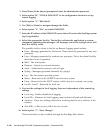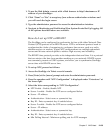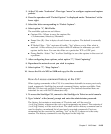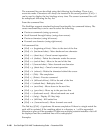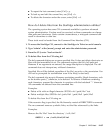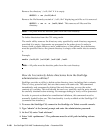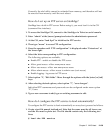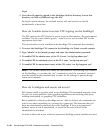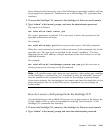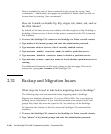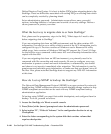
Chapter 2 NAS Head 2-137
■ To repeat the last command, enter [Ctrl] + p.
■ To back up and edit the current line, use [Ctrl] + b.
■ To delete the character under the cursor, enter [Ctrl] + d.
How do I delete files from the StorEdge administration utilities?
The operating system has some CLI commands available to perform advanced
system administration. Caution must be exercised, as these commands can change
data paths and structures. Under certain circumstances, a mistyped command can
result in downtime or data loss.
These tools must be loaded from the Command Line Interface (CLI).
1. To access the StorEdge CLI, connect to the StorEdge via Telnet or serial console.
2. Type “admin” at the [menu] prompt and enter the administrator password.
3. From the CLI, enter “load unixtools”.
4. To delete files from the CLI using del
The del command deletes one or more specified files. It does not delete directories or
files with the immutable bit set. The command requires the file's full path and
filename. If no arguments are entered, the usage description is displayed. The del
command does not interpret any wildcard characters.
Specified files will be deleted regardless of the file’s security or the permission. You
will not be prompted for confirmation even if the file(s) is read only.
The del command also accepts filenames containing possibly illegal characters, such
as the double quote (") character, to be deleted. To remove a filename containing
such characters, prepend the character in question with the backslash "\" character.
All commands are entered from the command line.
Examples:
■ Delete a file with an illegal character: SE5310> del /path/file\"test
■ Delete multiple files: SE5310> del /path/file1 /path/file2 /path/file3
To delete files from the CLI using rm
If the recursive flag is specified, the file hierarchy rooted at DIRECTORY is removed.
The rm command removes symbolic links, not the files referenced by the links.
Examples:
Remove the file 'file1' from the directory '/vol1/dir1'.
SE5310 > rm /vol1/dir1/file1



